Maxxe Albert-Deitch's Blog, page 3
February 17, 2022
All You Need is Love? An Updated List of My Favorite Love Stories
Okay, I’m a couple of days late, but my apartment’s still full of flowers and chocolate, so Valentine’s Day is still very much on the brain. With that in mind, I realized that it’s been a minute since I posted a list of my favorite love stories!
A lot of y’all know that I write a lot of romance, and I read quite a bit of it as well. So of course, a few of my favorite romances have made their way onto the list. But many of my favorites come from… well, less expected places. So without further ado, let’s get into it!
Okay, I take back my intro to this list, since the first one is indeed some ado. Specifically, Much Ado. About Nothing, that is.
[image error]
It’s easily my favorite Shakespeare play, mostly because of the love story at its center. Enemies to lovers, witty banter, and mutual respect between the central lovers. Also, comeuppance for slut-shaming (kind of). It’s pretty great! My first favorite adaptation of this is admittedly the 2013 Whedon version, but for those who don’t particularly want to deal with the general problematic-ness that is he-who-shall-not-be-named (or watch a movie filmed in his house), I can happily suggest that you go watch The Candle Wasters’ “Nothing Much to Do,” which is a genuinely delightful take on the story as a web-series set and filmed in New Zealand.
Red, White, and Royal Blue, by Casey McQuiston.
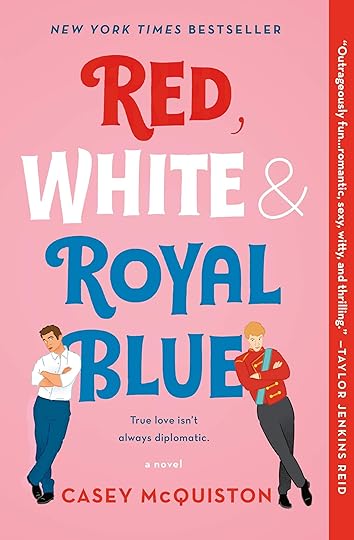
I’ve talked about this book before, I think. Put simply, the bisexual biracial son of the first female president of the United States falls in love with the prince of England, and it’s enemies-to-lovers. Obviously, it’s completely delightful.
The Simple Wild (series), by K.A. Tucker.
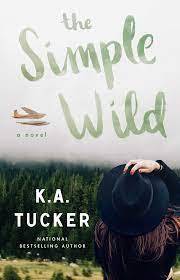
I’ve liked this author’s books for quite a while now, but the Simple Wild series is my favorite of hers. It’s about a city girl who moves to Alaska and ends up falling in love. Found family, wilderness survival, airplanes, and… also kind of enemies to lovers? It speaks to the parts of me that were obsessed with My Side of the Mountain and Gordon Korman’s books as a kid, but also happens to be a really good love story.
Well Met (series), by Jen DeLuca.
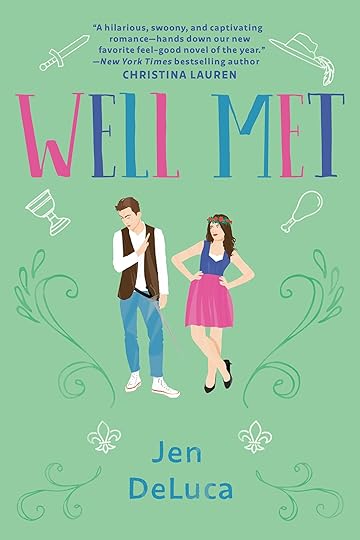
Oh, crap. Writing out my quick pitch for this book has made me realize that the first four entries on this list are basically the same story; enemies-to-lovers-with-lots-of-witty-banter-and-a-happy-ending. Oops? This one’s set in a small-town renaissance fair, and it’s completely wonderful. Summer romance between the uptight English teacher who plays a swaggering pirate and the super-caring-but-kind-of-a-mess girl running the tavern. It’s great. There’s a human chessboard, a bookstore, and it will make you want to run away with a Ren faire for the rest of your life.
The Night Circus, by Erin Morgenstern.
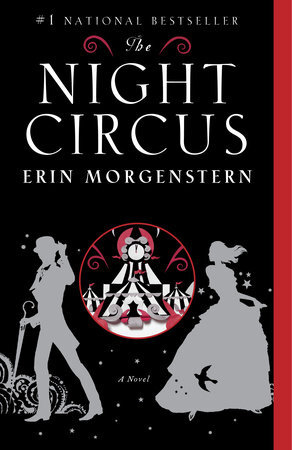
This book has had my whole heart for almost ten years now. And hey, it’s star-crossed lovers, not enemies-to-lovers! Some variety! In all seriousness, though, this book is one of the most gorgeous, lush, well-written love stories I’ve ever read. Can’t recommend it enough.
The Georgina Kincaid series, by Richelle Mead.
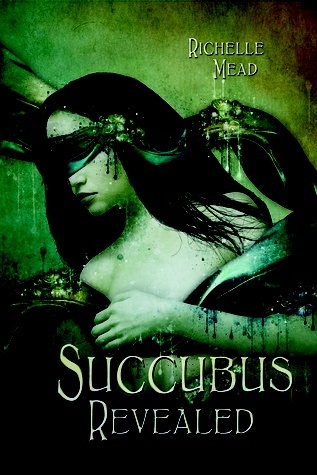
An adult take on the YA-fantasy standbys of vampires and angels and demons, this book is about the weirdly star-crossed relationship between a fantasy author and the succubus who works at the bookstore he likes to write at. It’s somehow an expansive, well-done urban fantasy and also a coffeeshop AU? It’s great.
The Lord of the Rings (hear me out!)
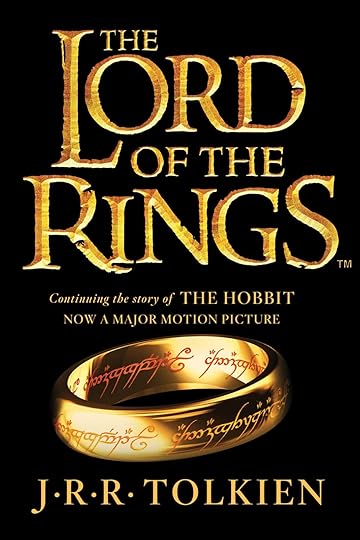
Okay, yeah, not much of an epic romance. BUT I’d argue that it’s still very much a love story—about the love between friends, who would go to the ends of the earth and beyond for one another. I am openly a die-hard Sam Gamgee fan, and Legolas and Gimli’s friendship is something that lives in my head rent-free. I think there’s also a case to be made that the whole series is just Tolkein’s love letter to linguistics, but that’s a different kind of post…
Speaking of friendship love stories, I also wanted to mention Kushiel’s Legacy.
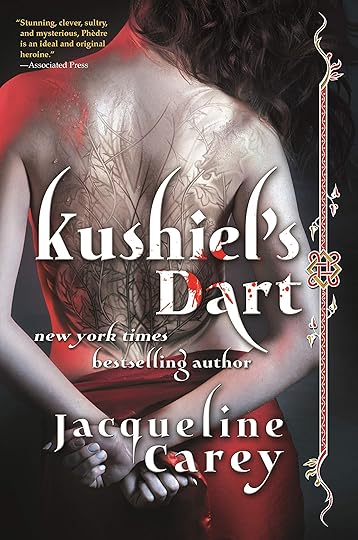
Yeah, no, not Joscelin and Phedre. They’re epic in their own way, and also so, so dumb right up until the end of Book 2. Does their romance make me happy? Yes, of course. But I don’t think it’s the primary love story of the series. Nope, not Melisandre, either. I think the true love story of the main trilogy is actually Phedre and Hyacinthe. Not in a romantic way at all. He gives up everything for her, and she for him, and they each end up with other people, and it’s a genuinely gorgeous friendship that I love.
Percy Jackson and the Olympians.
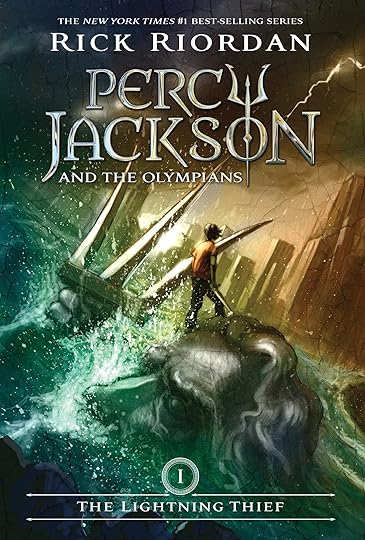
I know, it a kids’s series, blah blah blah. Well, guess what? I still love it plenty as an adult. And frankly, I’m not sure it’s a kids’ series at all by the time the story’s done, especially the second series. It’s one of my favorite love stories for a reason, though—please note that across the whole gigantic fandom, no one ever disputes that Percy and Annabeth are destined to be together. There’s none of that love triangle nonsense except for like ten seconds in the fourth book. For them, love isn’t an obstacle or an objective, it’s simply something that is. And it’s amazing.
Anne of Green Gables, by Lucy Maud Montgomery.
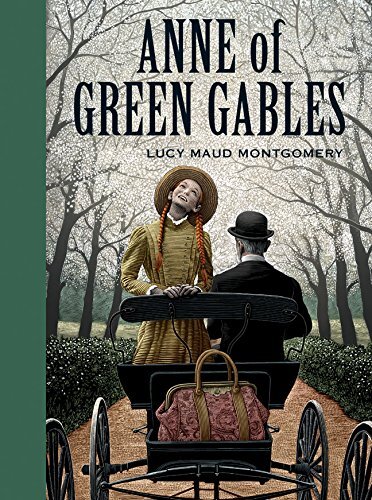
Okay, maybe not the first book. But books 2 and 3 are about two different kinds of love. 1, adult female friendships against a surprisingly progressive backdrop of coed education, and 2, realizing that perfect is overrated, and that an enemies-to-rivals-to-friends-to-lovers path is a much more sensible way to go. Anne and Gilbert might be my favorite love story of all. And… yes, it’s another enemies-to-lovers. Or, I guess, enemies-to-rivals-to-friends-to-lovers. Whatever. It’s excellent. Also, if you’re in the mood to revisit these characters but don’t want to reread three whole books (I will continue to ignore the fourth one and the follow-up series), may I recommend either the miniseries starring Jonathan Crombie and Megan Follows, or perhaps the modernized web-series, Green Gables Fables?
And finally, Dog Songs, by Mary Oliver.
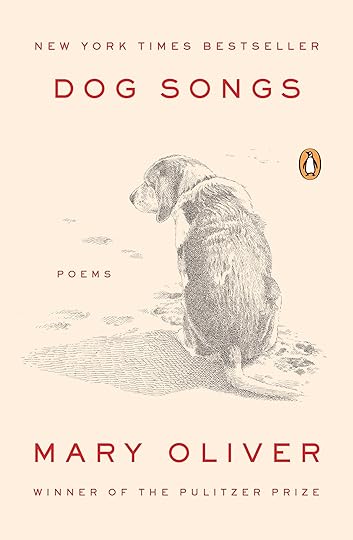
Because yes, the love between people and dogs deserves a spot here, too. And even better if it’s told through poetry. Mary Oliver’s got a special way of just hitting core emotional truths with such distinct lyrical specificity. It’s just such a lovely collection.
Honorable mentions: I thought about throwing in The Invisible Life of Addie LaRue, but frankly, my love for bittersweet stories does not extend to romances for Valentine’s day. I like my HEAs, dammit. I also thought about tossing my own romance novel on here, because I do indeed love Bryce and Kaylee an awful lot, but I thought that felt a little too self-promo-y for V-day (that said, if you’re interested, check it out here!).
Also, here are a few love stories from other media, aka things that are not books, but they are most certainly love stories! The Illusionist, which happens to be my favorite movie. Hadestown, a musical that is sweet and sad and tragic and wonderful (but again, probably a little too bittersweet for the main list). Where TV’s concerned, I’d have to throw Harley Quinn and Ted Lasso in there. And in real life… yes, my own love story! Because, yes, I live my life like it’s a novel and I do so intentionally. And I’m really happy with my person. So, yeah. That.
What are your favorite love stories, platonic, romantic, or otherwise? Please let me know in the comments, I’d love to check them out!
__ATA.cmd.push(function() { __ATA.initDynamicSlot({ id: 'atatags-26942-620ea52b787b4', location: 120, formFactor: '001', label: { text: 'Advertisements', }, creative: { reportAd: { text: 'Report this ad', }, privacySettings: { text: 'Privacy', } } }); });January 24, 2022
Han Solo, Harley Quinn, Magneto, and More: Why We Love to Love Our Antiheroes
Okay, so let’s get one thing clear first: the definition of an antihero, according to the dictionary on my desk, is “A central character in a narrative or drama who lacks the admirable qualities of fortitude, courage, honesty, and decency that are usually possessed by traditional heroes.” I’d take that definition a step further and note that an antihero is a protagonist, just not necessarily a perpetually good one.
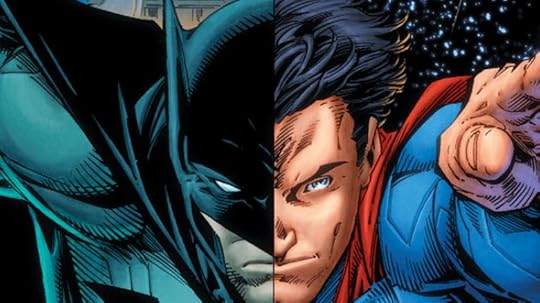
When I’m teaching writing classes I talk a lot about how Superman is no one’s favorite character, but Batman is lots of people’s. This is that concept: the perfect shining embodiment of goodness who always does the right thing no matter what is… fine? But not great. Perpetual goodness doesn’t get you an epic. Perpetual goodness is just kind of there. Take, for example, Star Wars. There’s a reason everyone’s in love with Han, not Luke. The moment when Luke becomes interesting is the moment when he wavers.
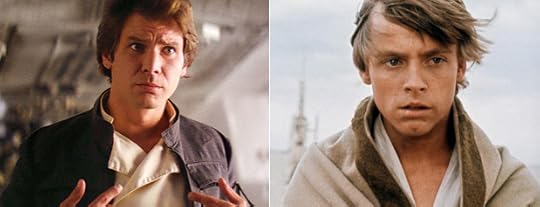
Now, let’s also note: a flawed hero and an antihero are not the same. For an antihero, if the scales tip just the slightest bit, the antihero could be a villain. Batman could break his rule about killing, if pushed just the tiniest bit too far—thus becoming a villain. Even at his most heroic, Batman is consistently just a step away from turning too dark for comfort. Harley Quinn has been characterized as a villain from the start, and her complexity as a villain is what has pushed her closer and closer to not-really-a-villain-anymore status. Her sheer likeability has made her a main character, and thus a protagonist—but she’s still not quite a hero. By the same token, someone like Tony Stark (yes, I know, I’m skipping between comics behemoths, I’m sorry) is clearly flawed. But even at the points when he shifts dark, he’s still trying his darndest to remain good. He still has morals, scruples, a code. He still sees himself as serving a greater good, which in fact does align with what the audience has seen the greater good to be. So, he goes down as a flawed hero, not an antihero.
Somehow, the antihero has become a romantic idol in the world of fandom. There’s a certain Bad Boy/Girl appeal there, because of course there is—the good guy (or girl) is fine. The good guy is safe. Even if the good guy is desperate, there’s very little chance that they’ll turn dark or villainous (again, look at Luke Skywalker here). But the antihero? They’re dark, but not necessarily evil. There’s an element of danger, of excitement, of unpredictability. Mass fan groups have congregated around Draco Malfoy, around Han Solo, around Harley Quinn. And it makes sense!

But I think it’s deeper than that. A true antihero is the foil to the hero, the Chosen One, the Perfect Person Up on a Pedestal. And to me, there are two ways to do this. The first option is to take a character, present them as a villain, and let them figure out the errors of their ways. Let them find their way to the good side. But of course, they learned from the bad guys. Their methods aren’t always clean, or nice, or neat. They cause damage. They’ve still got a good bit of “bad” energy. But they’re figuring it out—they get a redemption story. They might not get to be a hero, or if they do, it’s after a long, painful, uphill road. But they get there in the end. This character is a Zuko-in-Book/Season-Three arc, or a Draco-Malfoy-Specifically-As-Told-By-Fanfiction type. In some ways, I’d say this is even a Harley Quinn type. When done right, these stories can be brilliant, and make for well-done, complex characters.
But not as well-done or complex as what option two produces. Option two, I think, is the character who was supposed to be the hero. Maybe they wanted that destiny, maybe they didn’t, but it was laid out for them, and the gods used them too hard, pushing them past their breaking point. Maybe they’re working their way back. They’ll never be a true hero again, at least not in their hearts. But maybe they never stop trying. Maybe they’re figuring out what good even means, now that their own definition of it has been shattered beyond recognition.
What I like about this version of the antihero arc is that it’s subtle, and it allows for the mental and physical tolls that a hero’s journey would really take on someone in real life. The legitimate trauma that these characters go through should take a toll. Many of these characters who are introduced to us, the audience, as heroes live through some incredibly painful situations: kidnapping, losing everyone they’ve ever loved, literally walking through the gates of hell and back. These are not circumstances that should lend themselves to a happy ending—doing so does an extreme disservice to both the character and the story.
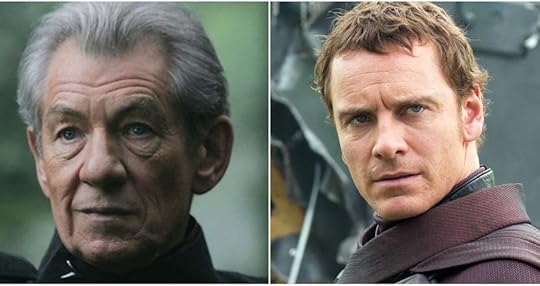
This take on the antihero sets up many of my favorites: The easiest to talk about is probably Magneto, since he especially is someone who still believes he’s serving a greater good, still seeking to prevent the same atrocities that he endured as a child, still looking to protect the friends and family he’s gathered. And yet—his pain has shaped and changed him, and hurt people hurt people. He’s not a full-fledged villain, not really. But you can’t quite call him one of the good guys either. And that’s what makes him such a good character. The heart of a hero is in there somewhere, but he’s too far past his breaking point to embody it anymore. So, we get a gloriously complex, unpredictable character with a deep-seated value system and commitment to his own code of honor. Setting him up as an antihero rather than a true villain is one of the best moves that these comics ever made. Another version of this story is someone like Holland, from Shades of Magic. He’s someone who believed that he could be the hero of the story, tried, and failed. So he’s still trying to do good, but he’s so trauma-hardened and world-weary that it’s easier to be caustic and cynical and just-a-little-too-dark-for-comfort. And it just works So. Well.
This topic does, of course, raise the question, “anti-hero, flawed-hero, or secret-self-destructive-villain?” about… a lot of protagonists. Kvothe, Imriel, Kaladin, Shallan, Dalinar, Ender, Shadow, and… well, weirdly, most of the main characters of my favorite sci-fi/fantasy books. I’d even argue that someone like Percy Jackson is more of an antihero than a hero by the end. Oops… maybe I should start a TikTok series addressing this?
What are your thoughts on this subject? Got any favorite heroes or anti-heroes? Let me know in the comments!
In the meantime, I’m signing off for now. Happy Monday, everyone.
__ATA.cmd.push(function() { __ATA.initDynamicSlot({ id: 'atatags-26942-61ef76a3e5018', location: 120, formFactor: '001', label: { text: 'Advertisements', }, creative: { reportAd: { text: 'Report this ad', }, privacySettings: { text: 'Privacy', onClick: function() { window.__tcfapi && window.__tcfapi( 'showUi' ); }, } } }); });January 19, 2022
Stories I’ve Consumed This Week
As I promised in my last post, I’m planning to keep y’all up to date on what I’ve been reading. So, here we go (beware of spoilers!):
As expected for the week before I start classes again, I’m mostly filling my time with fiction and fantasy. Much as I love history and anthropology and archaeology, I am taking a break from it for once in my life to enjoy some lighter fare. With that in mind, I took a trip to my local library and went from there.
Don’t Hate the Player, by Alexis Nedd

Rooted in the worlds of e-sports, online gaming, student government, and college applications, this was the kind of book that I would have loved to read in high school. Honestly, the vibe is very Becky-Albertalli-but-hetero, which roughly translates to Jennifer-E.-Smith. Which is a compliment in every way.
The book’s plot is both simple and very much not. Our two main characters have known each other since fourth grade, but don’t talk anymore. Both are heavily involved in eSports (in this case, a sort of league-of-legends-stand-in). One (the guy, of course) is open about it, and is generally an invisible nerd in real life. The other is living a double life—she’s a top student who’s in the running for student government and well on her way to a field hockey scholarship or three. No one knows that she plays video games at all—let alone that she holds a position on one of the top teams in the game, period. Which is all fine and good until the two of them run into each other at a huge tournament, with a million dollars of prize money on the line—and he recognizes her.
Don’t Hate the Player also reminded me a lot of Slay, which I read last year—another book about a girl living a double life that has to do with video games. Similarly, this book has a little bit of everything. Double life, understanding best friends, hardcore competitive type-A main character, friends-to-rivals-to-lovers, and extreme nerd girl shit? Yes, I was immediately all over this. Obviously, there’s a bit of a rom-com vibe, which is to be expected and also excellent. But it goes deeper than that—the author is well aware of the dangers of being a woman who exists online in “male-designated” spaces like e-Sports. Women routinely get harassed or even doxxed. Sexism and racism are rampant in the online world. And yeah, people play professionally and still aren’t taken seriously in “the real world.” Add onto that the very real challenges of sleep deprivation and burnout, and you have some unexpectedly legitimate social commentary in the middle of a fun rom-com video game adventure.
I enjoyed Don’t Hate the Player just as much as I expected to—which is to say, a lot. For all my video-game-playing nerd girls looking for a fun jaunt of a book, don’t hesitate to pick this one up.
Better Together, by Christine Riccio
![Better Together: A Novel by [Christine Riccio]](https://i.gr-assets.com/images/S/compressed.photo.goodreads.com/hostedimages/1642815274i/32475856.jpg)
This book was… something? The premise is fun— The Parent Trap, but with some Freaky Friday vibes, plus stand-up comedy and ballet, with a dash of queer energy to go with it. On paper, that’s a lot of things that I genuinely like, even if it’s a bit contrived. But something about this book was just not it for me.
I’ve long held some probably-not-very-popular opinions about Riccio’s writing since her first book, Again but Better. Maybe it’s that my first exposure to her was through YouTube (polandbananasBOOKS), and I’m having trouble separating her online presence from her writing? But my issue with Again But Better was mostly that her main character was so clearly a stand-in for herself that it kept pulling me out of the book. Similarly here, my issue with Better Together was either that every sentence sounded exactly like the author’s speaking intonations and idiosyncrasies, or sounded like she was trying really, really hard not to sound like herself, and nothing in between. Which, when you have one character who’s an extreme type-A person from New York, and the other who’s extremely type-B and from LA, the book is told in alternating first-person, and I can’t tell their narrations apart… I just don’t buy it.
The characters themselves were endearing, though sometimes in a loveable-asshole kind of way. That said, I felt like only one of them got the character development she deserved. The story just felt a little unbalanced—one sister is trying to gain traction for her stand-up comedy career, having thoroughly bombed her last performance. The other sister has just had her lifelong dream of being a professional dancer taken away from her due to a career-ending injury. These struggles are not even remotely the same. I also think my issues on the topic of character might be worsened in that the character who is more similar to the author– sister #1, who’s into stand-up and lives in LA– had the more developed, more realistic story, whereas the character with whom I identified– type-A crushed-dreams dancer sister– seemed to get short shrift. Eh, whatever.
I didn’t totally hate the book, and I’m not trying to bash it here. The shared universe and characters with Again But Better were cute. The relationship between the sisters was well-written. The romantic interests were great, and very compelling if bordering on a little-too-perfect (which is acceptable, in a rom-com). That said, this book didn’t really do it for me.
Critical Role (Campaign 3)
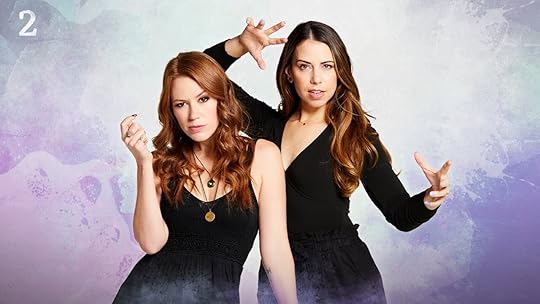 source: CR Youtube
source: CR YoutubeI did mention, I’ve been consuming stories that aren’t books! Those of you who know me IRL know that I play a lot of Dungeons and Dragons. I also (when I have the time) keep up with a 4-hours-per-week web show in which a bunch of self-proclaimed nerdy-ass voice actors all play DnD together.
I can talk a lot about how DnD has made me a better writer, and also about how watching people play professionally has changed the game for me, both as a player and a DM. But that’s a post for another day. For now, I’ll just chat about CR:C3.
Campaign 3 is not a standalone, the way it was advertised. I know that that fact alone has driven away some of my friends and fellow viewers. Frankly, it’s ten weeks or so in and I’m still not sure what the plot is or where it’s going. But I’m still watching… so, why?
The characters, and the brilliant folks who portray them. I mean:
A goth grandma who looks like she’s 30 and sometimes haunts things for fun like a wholesome Scooby-Doo villain.
A fey being who just doesn’t fully understand the concepts of human morality but thinks that stealing is fun and also that her fragile humanoid friends could use some backup.
A bard who makes terrible decisions but is generally trying to make his life work.
And uh, a robot and an old dude (or two).
I’ve been pretty vocal about how I believe all stories come from character, not necessarily from setting or from external circumstance (actually, come to think of it, that explains a lot of my feelings towards Better Together—it was a circumstance story where things happen to people, rather than a character story where people do things). Critical Role is a great example of how good character building and the ability to change a plot as it plays out make for some of the best storytelling out there. I don’t know where the plot’s headed yet, but I’m willing to be patient because I’m invested in the characters and I don’t mind a slow setup as long as it pays off. Which, I mean, maybe I’ll be eating my words about this in a month and I’ll have stopped watching too, but… I’ve got faith in this crew. So we’ll see.
In less exciting but still fun news, I’m actively rewatching The Vampire Diaries (because it’s great, and I will accept no judgment on this front), and Elite (because I’m studying for a language proficiency exam and screw it, I wanted something fun). I’ve also been reading and translating a lot of Borges and Quiroga, but that’s more for actual studying purposes than anything else.
Next up on my list of things to read is: The Blazing World, by Margaret Cavendish.
It’s… proto-sci-fi? Originally published in 1666, before sci-fi as a genre had been invented? And written by a woman, who was annoyed at being left out of the philosophical theory conversations that her husband was having with his university friends, so she decided to craft her own, but with romance and speculation about the future state of the world? I have no idea what to expect from this except lots of run-on sentences and general insanity but I’m looking forward to it. I wouldn’t be surprised if it merits its own post next week.
What have you all been reading? Do you have any recommendations for my next library trip? Please let me know, I always enjoy hearing from y’all in the comments.
__ATA.cmd.push(function() { __ATA.initDynamicSlot({ id: 'atatags-26942-61e8c383bf516', location: 120, formFactor: '001', label: { text: 'Advertisements', }, creative: { reportAd: { text: 'Report this ad', }, privacySettings: { text: 'Privacy', onClick: function() { window.__tcfapi && window.__tcfapi( 'showUi' ); }, } } }); });January 13, 2022
What’s New for 2022?
Wow, okay, we made it!
I know, I know—people make plans, and God laughs. Sure, it would be easy to just keep my head down and say, “oh, well, 2020 was terrible, and 2021 was slow, and 2022 is still a crazy COVID year, so might as well just throw all the plans out and let things be what they will be.” Except I’m not okay with doing that. Because guess what? 2021 was a damn productive year. I’m not willing to throw the good out along with the bad. So yeah, I’m going to do the maybe-mildly-jinx-y thing and plan out some of this year, and let you all know what to expect here on the blog for the next year or so.
On the Blog:
I’ve spent the last eight or so years keeping y’all up to date with what I’m reading and watching—I don’t plan on stopping that anytime soon. Hopefully, with PhD applications sent out and a slightly less insane semester ahead of me, I’ll have even more time for pleasure reading, which means more books to talk about!
I’ve been more into nonfiction than usual, but my tastes usually stray right back to rom-coms, historical fiction, and fantasy, so it’s safe to say that I’ll be reviewing lots of all of the above through this year.
I’ll also be keeping you guys up to date on the usual bits and pieces of life—the Foodie Friday posts are likely to make a comeback, as well as generally discussing big life topics and sorting out how I feel about current events. I can’t promise the usual 3-posts-per-week, but I’ll be doing my best to post weekly or twice a week when I can.
Additionally, I’ll be posting bits and pieces of my writing (fiction, poetry, novel snippets) both here and on my Medium page. Feel free to keep up to date with that, especially if you found your way to this page through Ten Lines to Tell or my poetry!
Upcoming Book News:
I do have some exciting book news on the horizon, including some new upcoming releases!
All the Way Up: The sequel to All the Way Home, is fully written and I’m well into the editing process. I’m aiming for a September release and so far it’s right on schedule. This book is a small-town-bakery rivals-to-lovers lesbian rom-com set in Rose Creek, the same town as All the Way Home.
Touchstones Re-Release: Some of you who have been following this blog for a while might remember Touchstones, which was published back when I was in high school. I’m in the process of re-editing, updating, and re-releasing it—serially this time, probably starting in early February. I’m especially excited about this project because I’ve been writing little scraps and bits and pieces set in the Touchstones world for years—since I was fourteen, really—and I can’t wait to share the more polished versions with y’all. Which brings me to…
Ghost Army: Speaking of Touchstones, what most of you don’t know is that I actually wrote a full-length sequel to it a few years ago. I never got around to editing it, though, nor to prepping it for publication. The Ghost Army been on the back burner for nearly five years, and everyone who knew about it has been progressively getting more annoyed that I haven’t done anything with it. So… my family and close friends can finally stop being thoroughly irritated with me! I’m finally working on it again! I’m reworking some of the middle sections and rewriting some of the areas where the writing could use a little more polish. I’m not really sure when this project will be released, but I’m expecting either the end of the year or the very beginning of 2023.
As a reminder—if you aren’t caught up on my previous published work and where to find it, here’s a link to that information!
Current Projects:
I have a few other small projects in the works as well—mostly continuations of 2021 projects. I’ve finally started a Medium page, where I’ll be releasing short stories and novel scraps on a fairly regular basis. Some of the Touchstones scraps are probably going to end up there, as well as some of my poetry. If you’d like to see what I’ve been up to over there, here’s a link.
I also fully intend to continue with my writing advice classes on Skillshare! I may not post often, but I do still record and post videos there when I have time. Over there, I draw on my academic background in history and anthropology to teach worldbuilding and storytelling. Upcoming classes are likely to include fantasy map-making, how to write magic systems in a non-cultural-appropriation-y way, and how to efficiently do and incorporate historical research into fiction worldbuilding.
Additionally, I still have a couple of novel-writing projects in the works, but nothing that’s quite ready for a release just yet. Current topics include screwball queer vampire historian comedy, space pirates, and dark academia Shakespeare retellings—we’ll see what turns out novel-shaped and what doesn’t, I suppose.
Art Stuff:
Yes, I’m still doing some art things when I have the time! I don’t monetize all of it—I still do a lot of watercolor and graphite/charcoal work for myself—but if you’re looking for what’s publicly available, this is what I’ve got (you can also take a look at my art Instagram, @inkandpaperx, if you’re interested).
I recently made an Etsy shop for polymer clay jewelry, most of which is vaguely DnD and fantasy inspired—think daggers and roses made into earrings—or just faintly absurdist, like slightly runny fried egg earrings. Feel free to check that out here.
I’ve taken to drawing DnD characters for my friends, too, mostly as gifts. I do take commissions, but only when I have the time! Above all, I’m just trying to get back into it for myself—there was a time when I thought I was going to graduate college with an art degree, so I’ve been trying to recover some of that passion where I can.
Other Stuff:
As far as my personal life and non-writing career goes… well, a lot of it is very up in the air. What I do know is that I’m on track to graduate with a Master’s degree in History this summer, which is exciting. After that, it’ll either be an Anthropology PhD or a job— applications are out for both, and the chips will fall where they may.
Those of you who know me IRL are well aware that the whole not-knowing of it all is absolutely stressing me out. Those of you who have been following the blog for a while know that I tend to handle stress through planning, baking, and running—and through writing about it here, so I’m sure you’ll get to read about more of that process as it happens.
Meanwhile, 2022 has already begun. Hello, new year, it’s nice to meet you at last.
__ATA.cmd.push(function() { __ATA.initDynamicSlot({ id: 'atatags-26942-61e0c61c248a6', location: 120, formFactor: '001', label: { text: 'Advertisements', }, creative: { reportAd: { text: 'Report this ad', }, privacySettings: { text: 'Privacy', } } }); });January 6, 2022
Pandemic + Anxiety + Grad School =… Growth? Happy 2022…
2021 was not an easy year.
Like many people, I’ve struggled with being cooped up inside, with feeling like there’s finally light at the end of the tunnel only for a new COVID wave to come crashing down, with feeling just generally *stressed* about *everything*. Also like many people, the last year has been a transitional one — out of college, into grad school. Out of NCAA sports, into recreational ones. Out of one city, into another, only I can’t explore it because pandemic. Long-distance from most of my friends and family — but oh, wait, it’s all over Zoom anyway.
In this bizarre, transition-filled year, I had a choice: lean into the changes, or fear them. Or, you know, both.
I’m not a person who handles liminality well. Like most people who work in academia, I like structure, I like certainty, and I like lists. Having no idea where I’m going to be living or working next year, having applications up in the air, and being in this perpetual in-between where I can’t plan for much of anything? It’s my own personal hell. But I’ve learned to lean into the weirdness of it, and in doing so, I think I’ve grown a lot. So here are the top lessons I learned as an anxious academic in the panic-filled pandemic year that was 2021:
1. You can’t prepare for everything, but you can plan for some things.
Yeah, this lesson kind of sucked to learn. But it’s true! I couldn’t prepare for my full school year, but I could sure as heck plan for my living situation, for what life with my roommate would be (she’s great, and I love my apartment — this one served me well), for the furniture I’d need, for the tuition I’d have to pay. I couldn’t prepare for all of my classes, because I didn’t have the syllabi ahead of time, but I had book lists to order and professors I could contact.
I’ve learned to ask the question, “If I can’t do anything about X, what can I do to prep for Y?” Because yeah. Sometimes, you can’t do anything at all about an uncertain thing, which sets off pretty much every anxiety trigger I have. But I can usually find other things to plan for, so I can be prepared as possible for those — which, yes, makes me feel a lot better.
2. Handle tomorrow’s problems tomorrow.
As helpful as it can be to plan for Y when I can’t plan for X, sometimes there is no plan that I can make for X, Y, or Z… and that’s okay. I can’t see the future. Plans might get canceled, people I love might get sick, etc. But you know what? The biggest lesson I’ve learned this year is that I can’t panic about things that are 3–6 months out, simply because I don’t have enough information to worry about it.
If it isn’t a “today problem” — something I can handle right now, or that will directly affect me in the next few weeks — then why should I worry about it today? My worrying isn’t going to change anything. Instead, I’ve taken to marking down on my calendar when I might have enough information to be worried — and worrying about it then. Usually, by that point, I have more information, life isn’t nearly as uncertain, and I’m much more capable of handling the issue *without* panicking.
3. Do what makes you happy. Nothing else matters.
I mean, obviously, some things matter. School and work and paying rent don’t always make me happy, but I still do them. But the point stands — this year has taught me, above all, that if something makes me actively unhappy or uncomfortable, 9 times out of 10 I honestly don’t have to give it my time or energy.
I started 2021 working as a writer for a magazine — I loved the writing, and it was a great opportunity, but I hated the stress, I was struggling with time management, and I wasn’t happy. So I quit, which gave me time to work on the small Etsy business I was launching, and time to read novels, and time to try new sports. Sometimes I even choose those leisure activities over the schoolwork, if the assignment wasn’t too important — and you know what? Every time, it’s been worth it.
I’m in a Master’s program now, researching a subject I genuinely love — I’m lucky in that regard. But if I hated it? I’d feel pretty comfortable getting the degree and then leaving the field entirely to find something I *did * love or feel passionately about. When my friends complain about their jobs or their current career paths, I’ve taken to asking: “Why stay?”
If the response is just “money,” I often suggest that they stay as long as they need to in order to bulk up their savings for a few months, and then leave to find something they care about.
4. Trust your friends to have your back.
This has been a big one for me, especially in the virtual era. I’m lucky in that I have some dear, close friends, many of whom are friends with each other. But learning to just trust that if I have a problem, I can call a friend and they’ll sit there and listen and offer advice has been a struggle — I tend to worry that I’m burdening people unnecessarily, that they don’t want to hear it, that I’m The Cheerful Optimistic One so I need to be strong for them.
Turns out, that’s pretty much just straight BS, as a few of my friends reminded me a few months ago. True friends have your back, as much as you have theirs. I’ve gotten more comfortable talking about my feelings — the negative ones, as well as the positive — and emotional honesty has paid so many dividends. I don’t feel like I’m bottling everything up all the time. When I’m with my friends — even on Zoom — I can just… breathe.
5. Sometimes you just need to disengage (and that’s okay).
That said, the other big lesson regarding my social life was that I learned to disengage — to take breaks when I need to, and to trust that my relationships won’t fall apart if I need some me-time.
I’m an introvert by nature — I’m usually exhausted by the time I’m done hanging out with people for 3–4 hours. On my days off, I want to go hiking and read a few books and maybe call *one* friend for a long phone call. Big parties and clubbing weren’t my scene pre-pandemic, and now large gatherings stress me out more than they used to as well.
I’ve learned to set boundaries — to tell people that I’m a little “peopled-out” and need some introvert time, and I’ll be back in a day or a few hours or whatever. I don’t have words for how much happier and at peace I am when I have time to spend on myself.
6. There is nothing either good or bad but thinking makes it so.
Yep, this was a tough one to get through my disaster-oriented anxious brain. It’s really just another take on the law of attraction, or the pessimistic side of Murphy’s Law, etc.
Not everything is a disaster or a perfect outcome. Some things just… are.
I’m the type of person who wants everything to be perfect, and if it isn’t perfect, I often assume that it will be terrible. But life is usually a mix of the two, with an awful lot of mundane not-very-exciting in the mix, too. I’ve been learning to live with that, too.
7. Ice water and sour candy are your friends.
No, seriously. Ice water for hydration and a refreshed brain, super sour candy (preferably citrus-flavored) to force me to focus on the flavor and stave off panic attacks or super anxious moments. It sounds weird, but it works.
Also, eating healthy keeps my brain happy and the anxiety to a minimum. Physical health does not equal mental health, but man are the two intertwined.
8. Try something new, if/when it’s safe!
As I mentioned earlier, it’s been a weird year of lots of transitions — including the end of my 18-year springboard diving career. In need of a new sport, I kept going with long-distance running. Quickly, though, I found myself missing the social element of diving. So, I looked around for something local where people would wear their masks, and ended up with… rock climbing.
I didn’t expect to love it — but I do. I was nervous as all get out to go out and meet new people and to try a new sport that I wasn’t going to be very good at. But it was so, so worth it.
(To be clear, I *sucked* the first few weeks. 18 years of athleticism geared towards 1–2 sports does not necessarily translate to a new sport with totally different styles of movement. But I got better!)
Dedication, practice, and having something to do with my body and brain in my off-time has been a total lifesaver. And getting to meet some new people in my new town has been pretty great too! All of the nerves quickly faded, and I’m really glad I put myself out of my comfort zone to try something new.
9. Find time to be creative, to read, to relax.
So, this one wasn’t much of a worry to me. I tend to find time to read or write during my workday, even when it is not necessarily in my best interests to do so (I may have re-read some 900 pagers during my finals week this winter? oops?). But what I’m not great at is making sure that I have time to relax with a book, as opposed to stress-reading as a form of like, executive dysfunction when I know I have other priorities.
See #3, “do what makes you happy.” Reading, writing, and doing art make me happy. I have learned that I have to actively set time aside for those activities. Otherwise, I end up feeling horribly starved for creative energy and time. It’s kind of like the problem with diet culture — if you deprive yourself of something for weeks, the final binge will be thoroughly counterproductive.
I have learned not to deprive myself of creative time. I schedule it into my days. I plan to spend an hour reading a few nights per week. I plan to spend two hours on Mondays making my bullet journal look good with pretty watercolors. I do wine-and-paint nights with my boyfriend, where I get to break out my fancy paint sets from my college art classes.
It’s in smaller doses than I used to have, but I still get to be creative — and that’s fully worth the time it “takes away” from other activities.
10. Doing Nothing counts as Doing Something.
This one, too, was a hard lesson to learn. I’m not good at Doing Nothing. I always have a to-do list with a million items on it, I always have that anxious tug to move around, to spend my energy cleaning something or working out or working ahead.
I have been learning to sit still. To be comfortable with my own company. To meditate, to understand my mind and body, to sort through my feelings.
Not every moment has to produce a product.
These ten lessons are hardly the only things I’ve learned in this twisty roller-coaster of a year, and I’m sure I have so many things to learn in 2022. But I’m really proud to have internalized this list at least. In a lot of ways, I feel like I’m a survivor of this madness — like one day, these years will go down in history and I will have to skip the pages in the textbook for fear of remembering it too closely. But I hesitate to call these years Completely Awful No-Good Terrible ones because these lessons have made me so much happier and so much more at peace.
I guess this is what they call growth?
December 1, 2021
Wrapping Up the Year: My Favorite Books/Movies/TV/Music of 2021
It’s December again, which means it’s time for my round-up of the best things I’ve read/watched/listened to this year—a highlights reel in content consumption, if you will. I’ll be honest, it’s been a busy year, what with graduating college, starting grad school, and writing two books, so this list might be shorter or more visual-content heavy than usual. But without further ado…
Best Books of 2021:
Rule of Wolves, by Leigh Bardugo.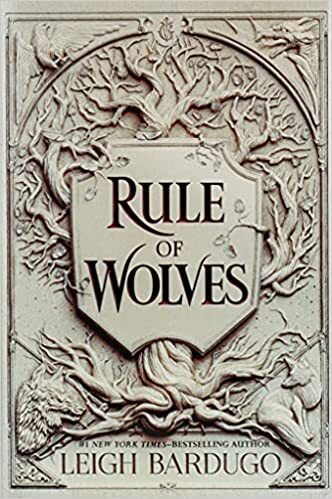
What can I say about this except that it’s excellent? It’s a gorgeously well-done ending to a saga (yes, it’s set in the Grishaverse). Dragons, lightning, LGBTQ+ stories, a sharp plot twist that if you’re paying attention you’ll predict a second before it happens, big battles, love… what’s not to like?
Project Hail Mary, by Andy Weir.
The guy who wrote Artemis and The Martian takes on first contact. It’s science-y, yes, but honestly, this one mostly just appeals to my anthropology background. Two species observing one another, stuck in a life-or-death-but-honestly-probably-just-death situation in space, connecting over common ground. It’s a fantastic space adventure and literally no one should be surprised that I adored it.
Island Queen, by Vanessa Riley.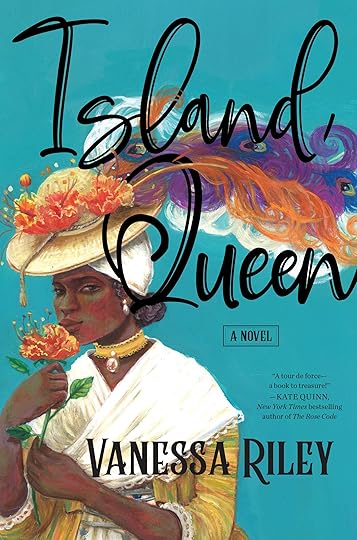
Again, this one appealed to my academic background as much as my own personal interests. Any of you who know me in real life know that I semi-accidentally got into history (my current graduate program and also literal profession) through reading historical fiction and then fact-checking it. This one is surprisingly historically accurate—it’s a multilayered, beautifully told story about race relations in the British-colonized Caribbean, love, and the economics of a subaltern existence. It was more readable than I expected for its subject matter, and more accurate than I expected for its readability.
Aurora’s End, by Amie Kaufman and Jay Kristoff.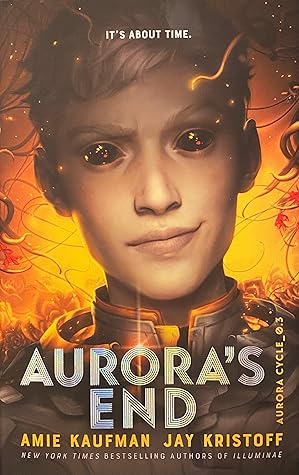
Oh, man. When these two authors get together and write a sci-fi trilogy, you know it’s going to be brilliant and painful and heartbreak-y. I had a harder time getting into the Aurora cycle than the Illuminae books, but I was pretty darn hooked by this one (it’s book 3). Multi-character sci-fi sagas can be hard to follow. Multi-character sci-fi sagas with time loops, multi-planet politics, several love stories, and a lot of fighting, not to mention a military structure that actually makes sense even as its being taken over from the inside out? That’s just insanity. But Kaufman and Kristoff pull it off, and the book is excellent. And brain-break-y, in a good way.
And also, things from 2020 that I didn’t post but I’m still thinking about:
Rhythm of War (Brandon Sanderson) is responsible for the best badass line I’ve read in a good long while—on par with “I am no man.” SO good. Honestly, the only reason Sanderson’s Cytonic, which actually came out in 2021, wasn’t on this list is because I liked Rhythm of War that much better.
Risen Kingdoms (Curtis Craddock): Historical-ish trilogy set in a bunch of flying airships, a mathematician politician princess who doesn’t care about love interests at all until late in the series, borrowing from real-world history but with magic? I mean. Sign me up. I read this last summer and I haven’t stopped thinking about it yet.
Best TV of 2021:
Shadow and Bone.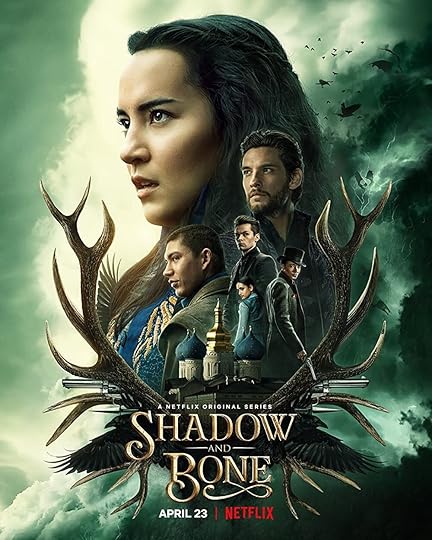
Yes, based on Bardugo’s books. Yes, it’s great. It even managed to make me like Mal, whose existence I considered the single biggest flaw in all 7 books (my other issue with the books was pacing, and the show actually fixes that as well). Amita Suman and Ben Barnes are especially good, and Jessie Mei Li’s chemistry with… everyone and everything is astounding. Just, very well done.
Harley Quinn.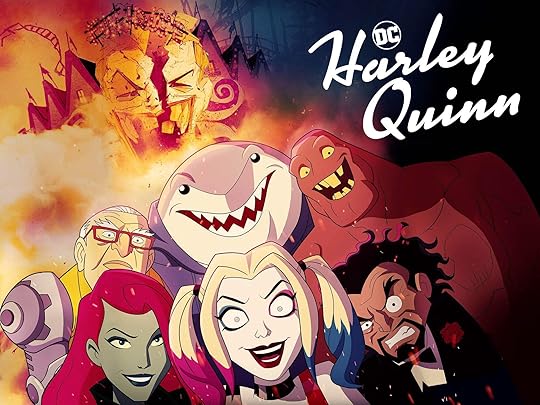
Funnily enough, I actually don’t love DC comics very much—the two exceptions are a couple of Batman plot arcs and any story that lets Harley Quinn and Poison Ivy team up. Fortunately, this show is about the relationship between Harley and Ivy, and it’s freaking brilliant.
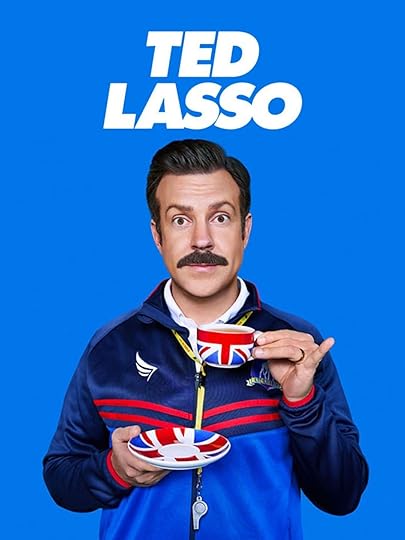
Ah, Ted Lasso. I can’t necessarily sum this one up succinctly. It’s just one of the best depictions of a lot of things I’ve seen… anywhere, really. Non-toxic masculinity, female friendships, inner conflicts, the truth that hurt people hurt people, healthy relationships, therapy being genuinely good for you, and of course, soccer. Because football is life.
The Chair.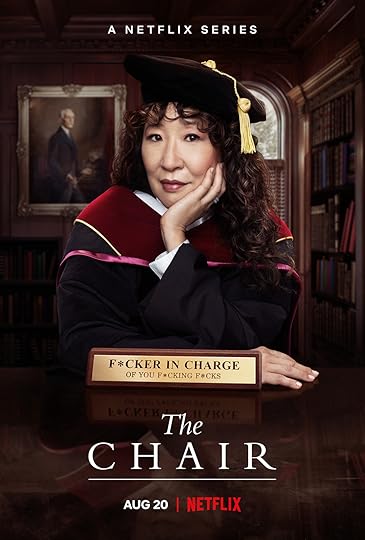
Okay, yes, this one is at least partially on here because I’m pretty sure I’d watch Sandra Oh sit there and read the phone book, because she’s excellent. But it’s also a sharp, incisive look at the current state of academia, at the roles laid out for women in our current world and the things we have to seize with our bare hands, the simple joys of learning and the muddled reality of trying to do anything simple in a complicated world. It’s just plain good.
Good Trouble.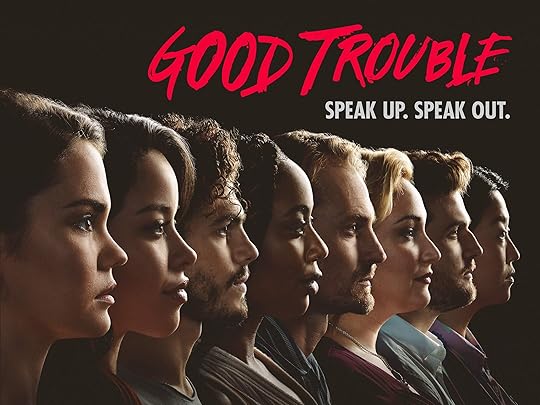
Yes, it’s a spin-off of a teen TV show (The Fosters). But you know what? I liked that one, too. Yes, I’m a twenty-something woman who wants to do some good in the world and sometimes ruffles a few feathers in the process but also half the time I’m just envious of anyone who can rock a good pantsuit that I could never afford. This show was tailor-made for me and for most of my friends. It’s like The Bold Type in that I’m clearly its target demographic and their marketing was effective if they got me to watch it, but honestly? I don’t care. Half the time it’s inspiring, half the time it feels like a warning. But it’s diverse, the characters feel and look like people I know and interact with, and the issues they cover are pretty darn relevant. So yes. I’m a fan.
Best Movies of 2021:
Black Widow: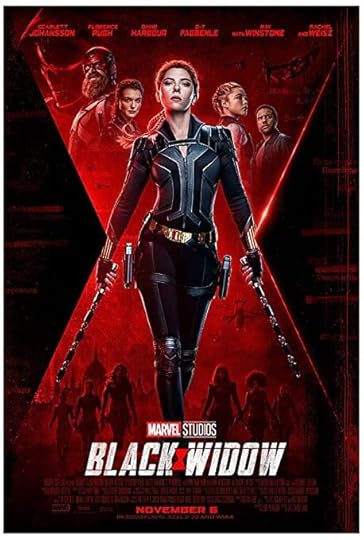
Is this a good movie? I mean, not really. But is it a superhero spy movie featuring Florence Pugh the queen of comedic timing, with excellent hair? Yes. Plot holes the size of Montana (slightly smaller than Texas, my usual point of comparison) aside, it’s a superhero spy movie. With Florence Pugh, aka the best addition to the MCU since Tessa Thompson. Just, yes. All of the yes.
Shang-Chi and the Legend of the Ten Rings.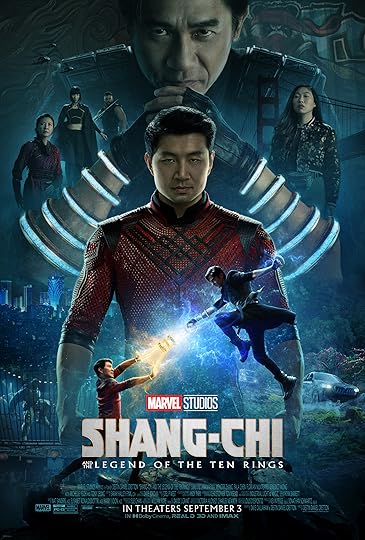
Okay, this one’s actually a good movie this time. It was fresh, it was new, it was bizarre. The fight choreography was stunning. Tony Leung and Michelle Yeoh stole the show. And yeah, apparently they’ve been teasing it since 2014—I was scrolling through Disney+ with my boyfriend and we found a 10-minute short that apparently aired seven years ago about Trevor and the Ten Rings. Excuse me? It’s a well-planned movie full of good one-liners and excellent action scenes, plus a few fun cameos (looking at you, Wong).
Inside.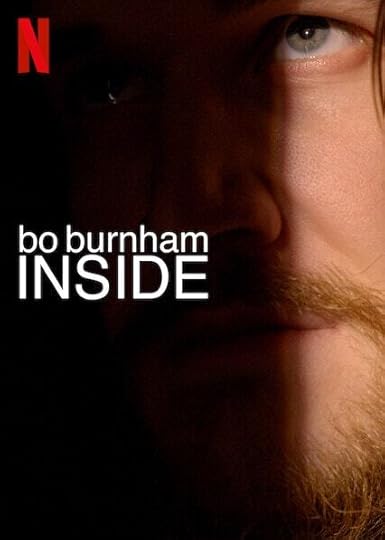
Ah, Bo Burnham. Inside managed to make me laugh, cry, and feel like a distinct underachiever all in one. Also, it’s catchy. And made me think about my own life choices a little too hard. Thanks for that, Bo.
Tick… Tick… Boom.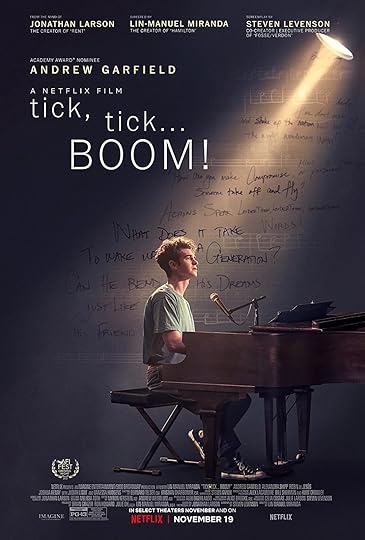
Okay, full disclosure, I cried like four times watching this. It’s a movie-musical about a musical that isn’t even the musical its main character is known for. Confused yet? Watch the darn movie. Andrew Garfield is weirdly great as Jon Larson, in the process of finishing his first musical, five years before RENT. I was familiar with the musical going into the movie, and it still hit me pretty hard. If you like musical theater, this one’s worth it just for the cameos. If you just plain like music, it’s worth it for the talent and the tunes. Just watch it, okay?
I’m still holding a place here for No Way Home, or perhaps for West Side Story? We’ll see.
Best Albums of 2021:
Star-Crossed, by Kacey Musgraves. Kacey’s always been good. This album might not be my favorite of all of her music—that title probably goes to Golden Hour—but Star-Crossed is just kind of heartbreaking and beautiful and catchy and also just plain good vibes all at once. It just works. It’s experimental and sad and fun all wrapped up together into something that shouldn’t be cohesive but is.If I Can’t Have Love, I Want Power, by Halsey. I probably listened to the opening song of this a good ten or twelve times before I even finished the album. It’s evocative, alluring, focused. It all adds up to a psychedelic Gothic fairytale, hinting at a lack of a happy ending, at the wreckage of youth. Sure, it’s kind of devastating. But man, it’s well-done.Death By Rock and Roll, by The Pretty Reckless. This is classic girl-punk-grunge-rock but with bluesy, almost Bond-theme-esque ballads thrown in for good measure. I sort of get the impression that people either love or hate the band and their music? I fall into the “love it” camp. It’s an album about hope, unexpected survival, and the legacy of rock and roll. Highly recommend.Red (Taylor’s Version). Yeah, y’all knew this one was coming. My favorite non-Folklore-or-Evermore Taylor songs are pretty much all off of Red. And you know what? It’s still worth listening to. I read at one point that the reason why a lot of people my age didn’t like—or didn’t want to like—Swift when Red came out had to do with internalized misogyny and not wanting to like a female artist singing about girly things. And you know what? Hard pill to swallow, but probably not wrong. I like Red a lot more as an adult than I did as a pre-teen/tween/high schooler. The lyrics are still great—and some of the additions to the re-release work really well. The “All Too Well” short film is great, and not just because Sadie Sink is wonderful. It’s genuinely astonishing to realize that some of the lyrics that got cut are still better than what some lyricists or writers would ever be able to come up with even on a good day. Not all of the album is brilliant, no—Red was a transition between genres, and it wasn’t all particularly elegant. But much of it still rings true—it’s about existential dread, growing older, moving on, and it still works. And frankly, reclaiming a career and artistic ownership in an industry that famously uses and spits out women is a power move that I’m happy to celebrate.
So there you have it—my favorites of the year. What did you all listen to, watch, and read this year? What did you enjoy? Please pass on any recommendations in the comments—there’s still a month left of 2021!
__ATA.cmd.push(function() { __ATA.initDynamicSlot({ id: 'atatags-26942-61a7dc7abd96a', location: 120, formFactor: '001', label: { text: 'Advertisements', }, creative: { reportAd: { text: 'Report this ad', }, privacySettings: { text: 'Privacy', } } }); });November 7, 2021
Writing Angry: A Reflection on My Most Popular Post
Okay, so. Heavy post time. A few weeks ago, I checked my blog stats, and out of curiosity, I thought I’d try to find out what post has gotten the most views. The answer was a bit of a surprise. As it turns out, the most popular post to date on this blog is a poem called “To the Daughter I May Never Have, A Letter You Will Never Read.” That post has gotten more hits than any other piece of writing I’ve ever put up on this page. It was selected as the runner-up for a nonfiction contest I entered a couple of years ago. And as proud as I am of that piece, I’m also a little conflicted about how much it resonates with people, because I wrote it when I was perhaps the angriest and most frustrated that I have been in my adult life.
It was in the throes of the Trump presidency. I was finishing up my sophomore year of college, I had started taking birth control less than six months earlier, and my phone pinged with the notification that my home state of Georgia had just passed a 6-week/ heartbeat abortion bill into law. I was dismayed, furious, and running out of ways to explain why or how I was so upset.
So I turned to poetry. For all that I am a fiction author, poetry has always been my primary way of expressing Big Feelings that I don’t know what to do with. There’s something very raw and therapeutic about taking big painful emotions and breaking them down into line and meter and rhyme and order. It makes sense, then, when I realized that, because of where I grew up, the state where I legally resided, an unborn bundle of cells would legally have more rights than I would, I got pissed, and I started writing.
See, the thing about abortion bills is, it’s not about pro-life or not. It’s about controlling women, and it’s about religion. As a very good protest sign I saw a couple of years ago put it, “if I wanted the government in my body, I’d have fucked a senator.” I am a woman who doesn’t particularly want to be controlled, and more than that, I’m a Jewish woman whose religion states that life begins at birth, not conception. It’s hard to deal with those facts, especially as the political tides keep turning and legislation around guns and women’s bodies keeps shifting. We currently live in a world where there are states where a gun literally has more rights than nonliving bundle of tissue, which has more rights than the woman carrying either one of them.
All of this is to say, despite a change in presidency, and despite almost three years having passed, I am not surprised that my poem resonates with people as much as it does. Because I was upset about bodily autonomy, not just for me but for future children. When that bill passed, I had to think long and hard—did I even want kids? What would my exit plan be if I was pregnant and didn’t want to be? If I could be put on trial for murder in the event of a miscarriage—a medical problem that carries enough guilt and pain with it as is—then why would I ever want to consider having kids? All of this was weighty stuff for a twenty-year-old who wasn’t even thinking about this at all. And another sneaky thought crept in, the one that sparked the poem in the first place: if this was what the world meant for women, then how could anyone stand to knowingly bear a daughter?
I will note, of course, that I am not, nor have I ever been pregnant. I am not in a place where kids are even a possibility—I’m still in school, not yet in an established career, still figuring out who I am and what I want to do and be. I don’t want to be thinking about this stuff—and yet it keeps showing up, as legislative fights, as protests, as pain. So I keep writing. And I’m not the only one still thinking about it—as evidenced by the more than 500 views that the poem post has gotten.
That poem is still one of the truest things I’ve ever written, and I don’t know how to feel about that. It’s been almost three years, and things haven’t really gotten better. I’m not any less conflicted about the idea of having kids, knowing that the world is on a trajectory for a trash fire death spiral, knowing that multiple courts have now upheld abortion bans, having seen dozens of sexual assault charges get overturned. I am not convinced that this is a country or a world that values women or children, and I’m still angry about that.
I’m glad that I wrote something to encapsulate that pain. I’m glad that people keep returning to that poem, and that it’s still meaningful. That’s a big part of why I write—to make something meaningful out of the mess that surrounds us all. But as glad as I am that I wrote something important that resonates with people… I don’t think I feel very good about the fact that it still feels necessary. I don’t want that poem to still be relevant, to still be topical, to still match what’s happening in the news headlines. Part of me really worries, am I going to spend the rest of my adult life asking, shouldn’t we be in a better place by now?
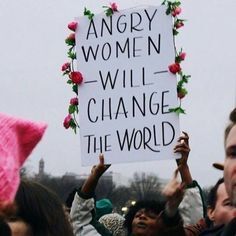 From a march that I attended. Still a very good poster. __ATA.cmd.push(function() { __ATA.initDynamicSlot({ id: 'atatags-26942-618877713c6c9', location: 120, formFactor: '001', label: { text: 'Advertisements', }, creative: { reportAd: { text: 'Report this ad', }, privacySettings: { text: 'Privacy', onClick: function() { window.__tcfapi && window.__tcfapi( 'showUi' ); }, } } }); });
From a march that I attended. Still a very good poster. __ATA.cmd.push(function() { __ATA.initDynamicSlot({ id: 'atatags-26942-618877713c6c9', location: 120, formFactor: '001', label: { text: 'Advertisements', }, creative: { reportAd: { text: 'Report this ad', }, privacySettings: { text: 'Privacy', onClick: function() { window.__tcfapi && window.__tcfapi( 'showUi' ); }, } } }); });
October 29, 2021
Food Diaries, Vol. III 10/29/21: James Bond, Nancy Drew, and Sourdough Bread
I’m writing this post on a rainy October day—one of those ones where the sky just stays gray from dawn to dusk, when the leaves are changing colors, but they hang limp and look like dull green and brown even though you know they’d shine vibrant reds and yellows if only the sun were out. It’s not all that cold out, but there’s a chill breeze and a dampness that just sort of permeates everything. The road that leads up to my apartment has a puddle bigger than me, and it sounds like splashing whenever someone drives through it. It’s the kind of day when I just want to throw some cookies in the oven, curl up with a good book, and go back to bed.
Unfortunately, I can’t do that.
I have adult responsibilities like a job and grad school and novels that I’m supposed to be writing. But I can at least reflect on what makes those cozy vibes so perfect, and since I’m working from home at the moment, I can get some sourdough bread rising on my kitchen countertops. See, when the weather’s like this, I end up in the mood for a specific kind of book: I want a mystery.
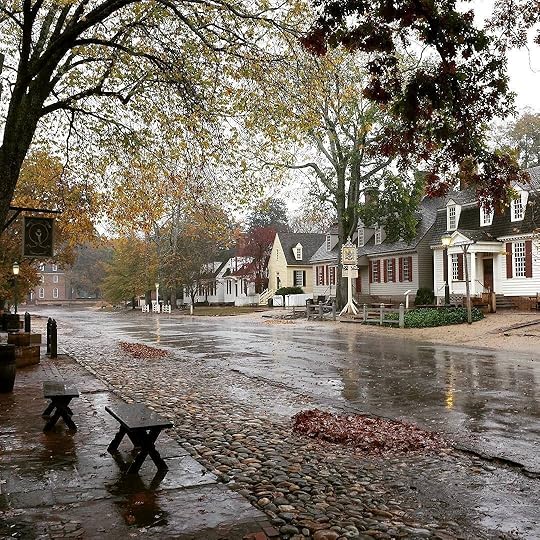 This is what my town looks like right now. See what I mean about rainy and gray?
This is what my town looks like right now. See what I mean about rainy and gray?
Last night, when the worst of the weather began to set in, I was sitting in a movie theater watching No Time to Die, the new James Bond movie. I think it surprises people sometimes, to learn that I love Bond movies. Maybe it’s the old-fashioned-ness of it all, maybe it’s the uber-macho hypermasculinity, or the oversexualization of female characters. Maybe it’s just that I spend a lot of time reading sweet love stories set in cozy cafes, or that I spend my weekends hiking through the woods. But yeah, I absolutely love a good, classic spy movie. Ergo, I love Bond. Daniel Craig’s 007 has always been my favorite, with Casino Royale easily tying with Goldeneye for my favorite Bond film of all time. Most of the reason why comes down to the word classic. There’s just something really excellent about knowing that, even when the threat is genetically engineered super robots or something similarly hypermodern, the best part of the movie will always be in slick gadgetry, a classic car, and some stunning fight scenes in timeless evening dress (it will surprise precisely no one that I found Ana de Armas’s character to be the absolute best part of NTTD). And there will always be a mystery—the secret of what and who the bad guy is, the clever quick-thinking that will provide an out for Bond to escape the high-tension thriller-esque climactic battles. Which makes Bond a perfect rainy-day movie.
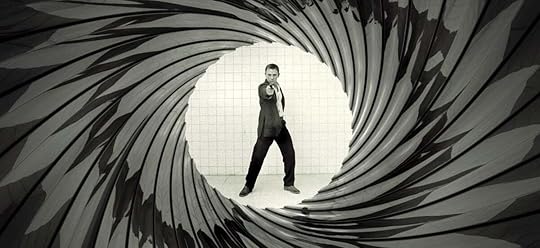
Now, to be clear, I love mysteries even when the weather’s not like this. I grew up on Encyclopedia Brown, the Three Investigators, the Hardy Boys, Nancy Drew, and Cam Jansen, and even the A-Z Mystery books. I hit middle school and started reading Sherlock Holmes, and then I hit high school and read… well, all the books I could get my hands on, regardless of genre.
When it comes to rainy days, though, I end up reminiscing on favorite mystery books. And to me, the most formative by far was Nancy Drew. My grandmother handed me my mom’s old hardback, yellow-and-blue copy of The Secret of the Old Clock when I was seven or eight getting ready to hop in the car for a long drive back home at the end of November. It was cold and drizzly and miserable out, and I was about to be stuck in a car for sixteen hours or so. I plopped myself down on the steps in that house, and I started reading.
[image error]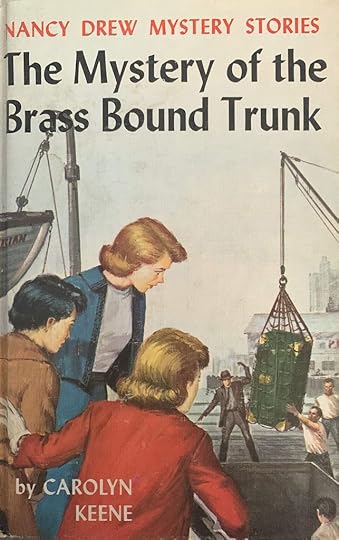
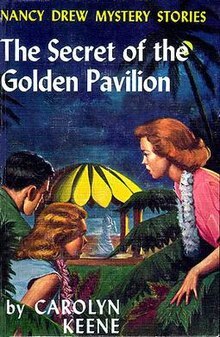
Little did I know, I’d be hooked forever. Not on Nancy Drew, specifically. But on serial mysteries, and on the concept of girls being badass clever detectives while also being undeniably girly. It probably helps that Nancy Drew is a character with a great relationship with her dad, and I was (and kind of still am?) tired of reading books about kids who can’t stand their parents. Nancy got the car, the boyfriend, the friends, the adventures, the autonomy, and a great relationship with her parental figures. She was smart, she was girly, she still had time for fun—I wanted to be her, because of course I did.
Nancy Drew and James Bond have some things in common when I think about it. Not just the fast-paced mystery-solving, or the fact that they’re both serialized, with writers changing out with each iteration of the story. There’s a certain kind of comfort in formulaic, serialized storytelling—every story may have different players, and a different overarching story, but there will always be a familiar structure to return to. Bond will always have to save the world. There will be quippy one-liners and all-out brawls, all with that fantastic score underlining his Bond-est moves. Nancy will always have to solve a mystery, and she’ll do it in style with her friends beside her, except for the pivotal moments which she’ll have to face alone. And in the end, there will be a resolution—even if it’s sometimes just the next clue, leading to the next chapter of a larger story. I’ve always been in it for the vintage vibes of an old car and the clothes—the books came out in the 1930s, and then were revised in the 60s, and there’s something old-fashioned-but-undefinable-and-yet-unmistakably-elegant about the books now. It’s that classic elegance that I think keeps drawing me back to both, just as much as the mystery and the action.
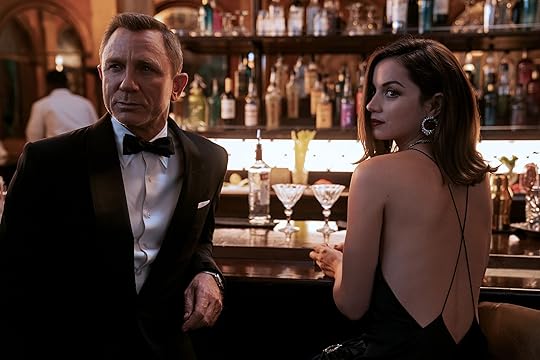 I mean… see above for classic elegance. And Ana de Armas.
I mean… see above for classic elegance. And Ana de Armas.I have always loved being able to solve the clues alongside the characters—to feel like there’s a puzzle, a challenge in which I can take part. Mysteries were how I got into art history and history in the first place—I fell in love with the idea of tracing logic and clues to put together a complete story a little more with every book I read. I’d argue that From the Mixed-Up Files of Mrs. Basil. E. Frankweiler, Chasing Vermeer, Shakespeare’s Secret, and yes, The Secret of the Old Clock collectively did more to inspire my current career trajectory than any class I took in middle school and high school combined.
Y’all might be wondering, from the title, what the hell does any of this have to do with sourdough?
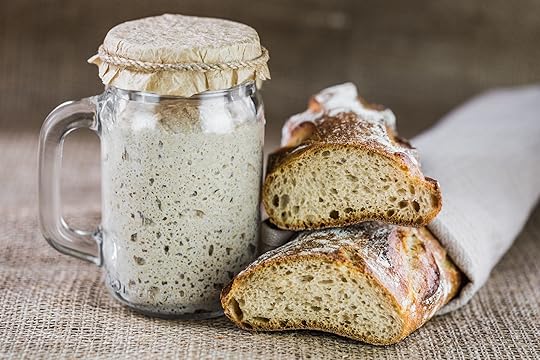
Well. This is a Foodie Friday post, I swear. Those of you have baked with sourdough before probably know: it’s finicky, even when it’s being predictable. You’re basically raising an organism in your house and praying that it behaves when it’s time for it to help out. On top of that, you have to use it up every week, and there’s a kind of meditative catharsis in baking with it, as well as breathing out when it’s finished and your issues are resolved… see where I’m going with this yet?
Yes, I’m comparing rainy-day sourdough baking to serialized mystery stories. It’s a formulaic process, but something is always going to be a little different with each iteration, whether it’s the kitchen temperature or the dough hydration percentages or the placement of a cast-iron pot in the oven. It’s comforting in that there’s a familiar routine to the baking, but at the same time the knowledge that this loaf will not be identical to last week’s or to next weeks, and it’s my job to problem-solve as I move along.
All this is to say that I love a good mystery, and I love some good bread. So I can’t recommend enough: if you’re in the middle of a disgusting rainy day like I am, go put something carby and delicious in the oven. Crack open a mystery novel, even one you haven’t touched since you were a kid. Watch a classic, old-fashioned spy movie. Heck, it’s a Friday—when the work day’s done, maybe drink an Old-Fashioned, or a similarly classic beverage. My point is, lean into the vibes—they’ll do you some good.
__ATA.cmd.push(function() { __ATA.initDynamicSlot({ id: 'atatags-26942-617c358a05be3', location: 120, formFactor: '001', label: { text: 'Advertisements', }, creative: { reportAd: { text: 'Report this ad', }, privacySettings: { text: 'Privacy', } } }); });October 20, 2021
Power Outfits and Good Food: My Ten-Step Guide to the Perfect October Day
October is my favorite month of the year—it’s when the leaves start to turn, the air starts to crisp up, it’s seasonally appropriate to wear all of my favorite outfits, and no one judges me for drinking all of the hot beverages with cinnamon in them. December might win the ultimate prize for coziness, but October has a solid handle on the most joyful.

October’s also incredibly stressful. It’s midterm season for those still in school, it’s fall deadline season for those who are out. It’s a time when work piles up, when applications are due, when (if you’re me) you have to buy new bookshelves because your desk and coffee table have run out of space. Days get shorter, and SAD sets in. NaNoWriMo is right around the corner, with all the stress that comes with starting to slowly ramp up. Mornings are darker, and it’s a little harder to haul yourself out of bed. I get it.
But I also… still love it– mostly because even a stressful day can still be filled with things that I love, and things that make me happy. Yes, even on days when my coworkers’ emails make me want to bash my head in, or when I have more books to read in a week than I have time for, etc.
So here we go—my ultimate list for how to have a good day in October, even when the stress pushes in on you from all sides. Mine is a little “that girl” ish, but honestly? It doesn’t have to be. It’s all about finding what works for you.
Wake up early, on the first alarm. It’ll be hard, I know. But I’ve found that I’m generally a happier, easier person to be around when I get up just before sunrise. I usually have to haul myself out of bed and yank on a sweatshirt while I turn the light on, but it works. The day feels a little longer—in a good way—and I get to enjoy all of what little sunlight I get.Get outside, and move your body! I’ve written about this before—my days are always so, so much better when I manage to get out first thing in the morning for a run, or even just cracking open a window and doing some yoga. I’m basically a very mobile plant—I need sunshine and fresh air or else I don’t do very well. The endorphin boost is awesome, and the adrenaline helps me wake up. Plus, I get to enjoy the quiet hours in the morning when everyone else is just waking up—I get pink sunrises, and pale light through the green-and-red-and-yellow trees on my running trail, and that snoozy, half-awake feeling like I have the whole world all to myself. It’s magical.
Make yourself your favorite breakfast and a good hot beverage to go with it. I’m not naturally much of a breakfast person—i like individual breakfast foods, but I’m unlikely to actually eat them before 11am. That said, I know I need food, because duh, and there’s nothing better than a meal I really enjoy while I’m getting my workday started. So, I figured out a breakfast food I can have every day without getting horribly bored of it: apple-cinnamon oatmeal with berries cooked in, topped with chia seeds, melty peanut butter, and more cinnamon. It’s reasonably healthy, made of cheap ingredients, and colorful enough that I don’t feel like I’m eating carby sludge. I do switch out my teas on a daily basis—sometimes it’s a white peach matcha, sometimes a pumpkin-spice chai. Yes, I’m basic. I don’t care, they’re delicious.
Wear outfits you genuinely like. As I mentioned, October is The Best month for fashion. You get to wear long sleeves without sweating to death, but you don’t need to cover it up with a heavy coat. It’s incredible. You know that confidence boost you get when you wear a great power outfit? You can have that every day. My own vintage-academia wardrobe comes out in full-force every October—long sleeves, lace, plaid skirts, collars, tall socks, heeled boots, all with vaguely autumnal makeup and the knowledge that I can grab a leather jacket or a blazer if I need it. I feel so confident in clothes that feel like ME. That feeling doesn’t have to be limited to presentation days or photoshoots—it can be an everyday thing. Don’t just dress for the job you want to have, dress to impress yourself.
Make time for your friends. So, I don’t have time to do this every day. It’d be nice if I did, but there’s this very annoying thing called work, and between school and my job and writing, I have a lot of that. So I pull out my calendar and go from there. I schedule in phone calls and Zoom hangouts and time to play DnD. And when I go to do those things, I do my best to be wholeheartedly present—not multitasking or scrolling through social media. I just try to spend that time with my friends. Obviously, I’m not always successful at that—but seriously, nothing compares to a good hour-long phone call with a close friend or significant other where you’re just focused on the time you’re spending together.
Acknowledge that there will be days when not everything gets done. This was a huge realization for me—I’ve been a type-A, highly organized, deadline-oriented student my whole life. But hey, sometimes you need sleep more than you need perfect citations, and sometimes you need a good meal with good friends instead of a night at your desk working ahead. Once that knowledge sinks in, you’ll have a much healthier time of things.
Eat good food. Honestly, a large part of my happiness and mental well-being has come from the fact that I generally only keep food around that I really do want to eat—things that taste good and make me feel good. Fresh in-season produce, cheese, high quality chocolate, the fixings for a few childhood favorites. Those things all live in my fridge/freezer/pantry all the time. Why? The same reason I dress up almost every single day. I can improve a bad day with good food, and I can make a good day even better by eating well. I cook recipes that catch my eye. I bake my own bread (FANTASTIC stress management tool, honestly—I always feel better after kneading bread by hand or bashing butter flat with a rolling pin). I gift cookies to my friends. Getting creative in the kitchen and treating myself to the occasional delivery option are always good choices.
Take the time to come up with a good evening wind-down process that works for you. This isn’t the same for everyone. Me, I stop drinking caffeine at a certain hour of the afternoon. I put my laptop away, preferably charging it on the other side of my room or in a different room entirely. About an hour before I want to sleep, I dim the lights a little and turn on my twinkle lights. I set my oil diffuser on, with a lavender-and-orange scent that I only use at night. Often, I call my boyfriend to say good night, but if he’s already asleep or if he’s busy, then instead I pick up a (paper) book, and I read a little bit until my eyes get a little heavy.
Journal. Perhaps the best habit that I’ve developed over the years is dumping all of my thoughts into a journal at the end of every night—it helps to manage my anxiety, it keeps me from unloading my frustrations onto people who don’t really deserve my ire, and it helps me keep track of all of the good things in my life. I used to write a gratitude list every night. Lately, I’ve expanded that into a positivity list. Most nights, I manage to jot down 8-10 things that are good—that make me happy, that are good for my friends, that are good for the world. What matters is that i end the night on a positive note, even if i’m stressed and anxious. Also, there’s something inherently cozy about curling up in a cold room under a warm blanket and writing a journal by lamplight.
Revel in the things that bring you joy. Seriously, I mean that—if dressing in costume for Halloween makes you happy, do it. If you want to run around crunching leaves on your feet, do that. If you want to dress like a Jane Austen heroine and stand underneath the trees looking longingly out at a field, great, okay. It’s just that simple—do what makes you happy.
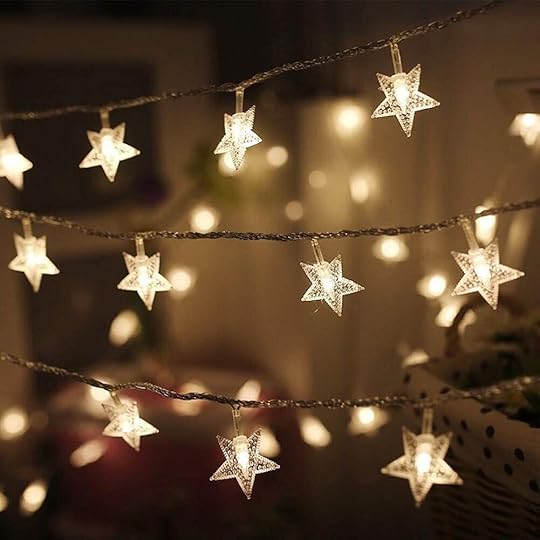
So there you have it– my list of tips and tricks to keep the best month of the year pleasant, cozy and generally delightful.
What are some of your favorite ways to keep the stress away and get the good vibes going? Let me know in the comments!
October 11, 2021
Notes on NaNoWriMo: How to Manage Your Time to Write Novels, And What I’m Doing
In the last ten years, I’ve noticed that the biggest issue most people have when it comes to finishing NaNo—and probably my biggest struggle with ‘winning’ every year myself—is time management.
You’re trying to write 50,000 words in 30 days, during what is typically a very, very busy time of year. If you’re a student, especially a college or grad student, the amount of busy triples. So being organized is so, so important. Over the years, I’ve established some strategies that work really well for me, so here we go:
Planning, planning, planning.I’m in a position where I’m fortunate enough to have nice pieces of paper that tell me what all of my deadlines are and will be for the next few months—syllabi! I’m also fairly organized to begin with, so this part’s fairly easy for me. So the first thing I do in early October is I make a spreadsheet. That spreadsheet contains every deadline I have, through the end of the year—homework assignments, midterm papers, final papers, a prospectus, a novel deadline, revision deadlines, PhD application deadlines, all of it. I then proceed to color code that spreadsheet and/or link it to my Google Calendar. Is this system perfect? No, because it requires me to actually maintain that spreadsheet, and if I forget to log something I’m probably in trouble. But it works for me—I need to have all of my deadlines neatly written out and lined up so that I know when I’m going to be insanely busy and when I’m going to be okay.
Here’s an example of mine:
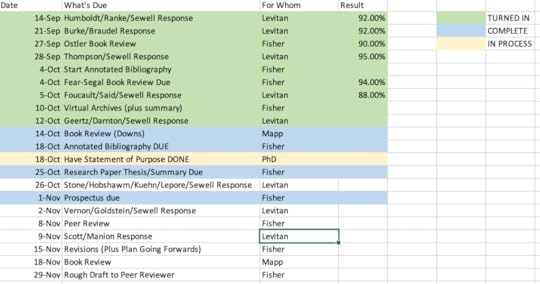
I should also mention that this system is just good if you’re really busy, NaNoWriMo or no. I like color-coding, I like planning, I like backups.
2. Figure out what you’re going to write, but don’t lose momentum on your current projects.
Okay, so I don’t think this is a problem that everyone faces, but it seems to be a common thread on the NaNo forums this year, so here we go. I’m almost always doing about five million things, that isn’t news to anyone. But that can be a problem every November, because NaNo tends to require a contiguous train of thought and some single-minded insistence on sticking to one project.
I don’t usually have a problem sticking to one story—I tend to pick one project and work on it until it’s done. Which is usually a good thing. But I also usually have a project going on through the end of October, which, as I mentioned last week, is when I should probably be working on my NaNo outline. So that’s an issue, especially when those projects are so drastically different in tone.
This year, I’m finishing up the companion novel to All the Way Home, which is a queer bakery romance. I’ve got a novel-length fanfiction in the works, which is a spy thriller set in the 1920s. I’m writing PhD applications, which are their own genre entirely. I’m writing a total of 90-120 pages between now and December in graduate-level papers, which are, by nature, nonfiction. All of these have deadlines. All of these things make me a stronger writer. None of these things are helpful when it comes to NaNoWriMo being in two and a half weeks.
So, I’ve got a “dump file,” and an outline. Instead of single-mindedly focusing on the All the Way Home sequel, I let myself think about other things. I hit my word quotas, I keep on top of my schoolwork, and if I have any leftover time whatsoever, it goes into plotting out my NaNo book. It’s a balancing act, and I handle it… as best as I can.
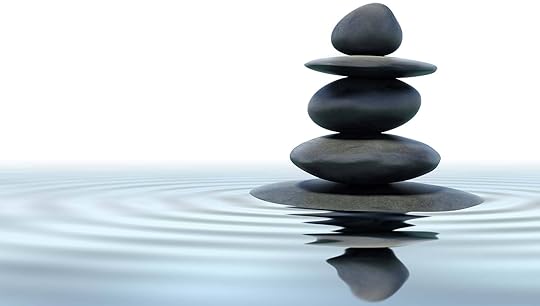
3. Get excited!
NaNo is a fun and creative time. I get to engage in unbridled, full-throttle creativity, full-steam-ahead for an entire month. It’s amazing. It’s magical. I get to get excited about my new project all over again!
Like, hear me out. This year, I get to write about historically accurate pirates, who are also female, and queer, and have godly patrons. And there’s a high-stakes scavenger hunt. And also like, magic battles. This is basically everything that I love about adult fantasy and historical fiction and I get to write it, which means I get to find out what happens next.
If I have one tip when it comes to selecting your NaNo project, it’s this: write something you want to read. Write something that you care about. It can be the most obscure, niche thing, but if you care about your choice of story, it’s worth getting that story down on paper.
4. Carve out a designated space for writing.
So, I’m sort of a person who can just sit down and write anywhere. I like coffeeshops best, but I’ll settle for just about anything. A clearing in the woods. A chair at my kitchen table. The corner of my sofa. My dark room in the twenty minutes before I fall asleep. My high school English classroom, while the teacher was like, actively teaching (sorry Ms. J). My high school library, with a tray of cookies and coffee, because I had the best high school librarian ever. My point is, the space doesn’t need to be literal. But I do need to carve out space.
I tend to do this by making sure that I have a dedicated amount of time to just spend on the story and nothing else. I get my snacks, my water, my tea, my coffee, whatever. I put in my headphones and throw on a soundtrack (the What Remains of Edith Finch music has been a favorite lately, or the Nolan Batman soundtracks). It’s just uninterrupted writing time, for at least half an hour a day, preferably an hour.
And here’s the key—I start on that before NaNo. I shove it into my brain that writing happens, every day. It becomes a habit. It makes my brain feel itchy when I haven’t written anything. It puts me in the right mood for story—no matter what that story is.
If you’re lucky enough to be NaNo-ing alongside friends, you can even invite them into your designated writing time—share a snack and a giant pot of coffee, have an ongoing Facetime call, sit in the quiet and get the work done, then hang out afterwards. Some of my best writing has come out of hunching over my laptop with a gingerbread latte and a good friend doing the exact same thing two feet over (I miss gingerbread lattes. Starbucks should bring those back, please).
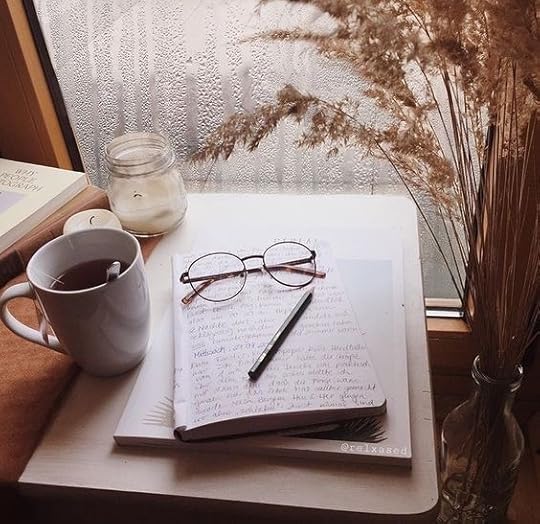
5. Do one thing that is not writing.
Yes, you read that right. Give yourself a break from the writing, and just like establishing a headspace, this is a habit that I, personally, have to establish well before NaNo actually starts.
Play Dungeons and Dragons with friends. Go for a run. Go rock climbing. Go to a Zumba class. Draw something. But set time aside for not-work and for not-writing. That’s important. Brains need a break. Brains need rest. Physically active time, role-playing, visual art—those are all helpful.
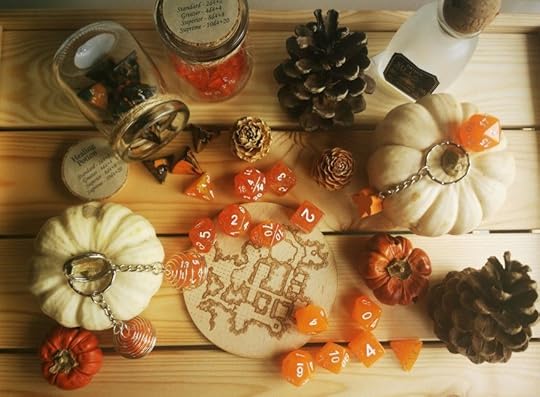
If you’re stressed about NaNo, that’s okay—but this is the time to get excited. This is the time to feel gleeful, because you can do this. You get to look down at an outline and say, “Oh, yes. This is the book I’d want to read.”
As William Faulkner once wrote, “if a story is in you, it has to come out.”
__ATA.cmd.push(function() { __ATA.initDynamicSlot({ id: 'atatags-26942-61646b4bd8bf2', location: 120, formFactor: '001', label: { text: 'Advertisements', }, creative: { reportAd: { text: 'Report this ad', }, privacySettings: { text: 'Privacy', } } }); });


